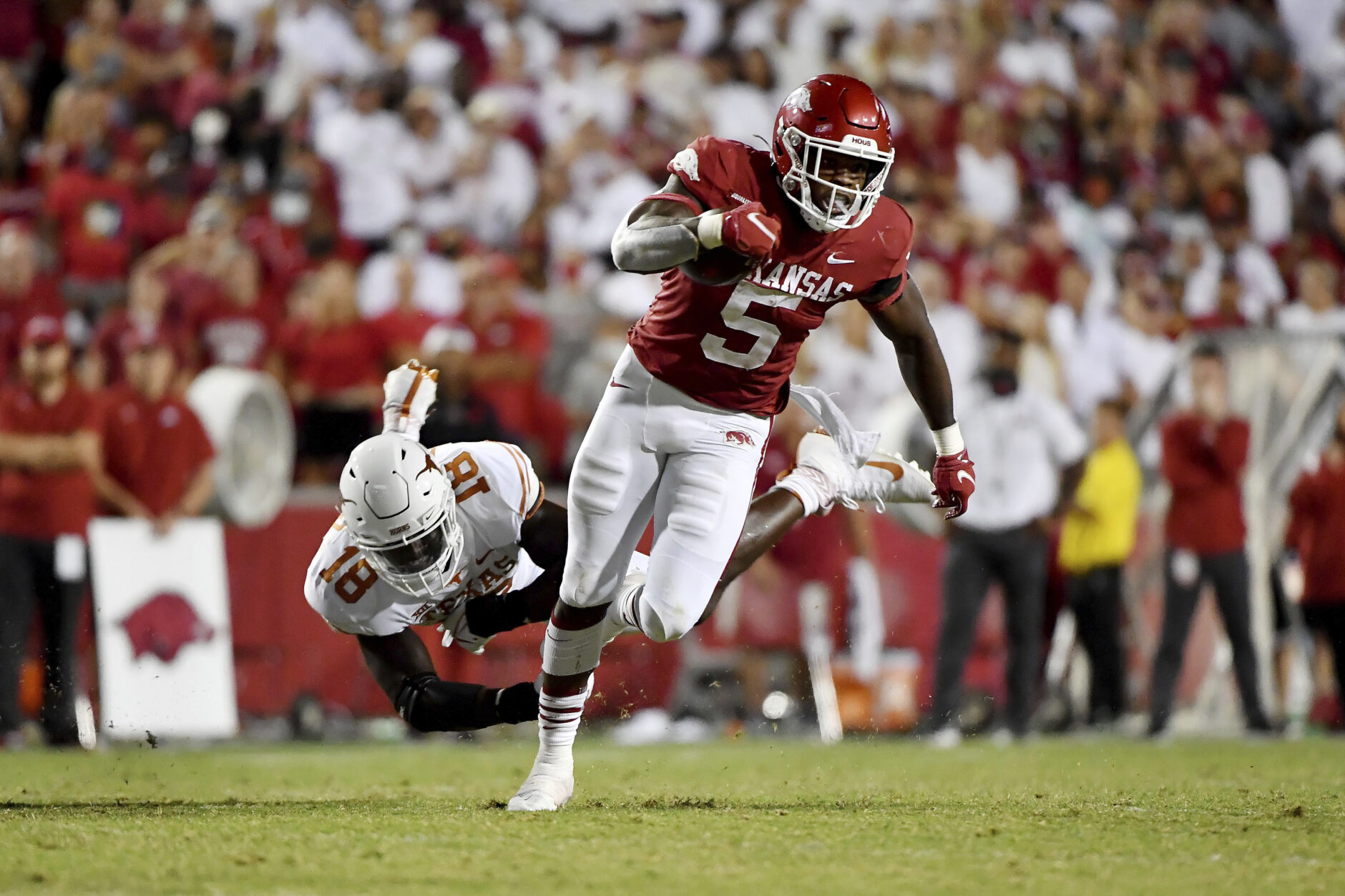College sports already adapting to new NCAA transfer rules
As spring practice winds down, Arkansas coach Sam Pittman sees potential holes in his roster. Arkansas didn’t use the maximum 25 scholarships this year for incoming recruits. Hence, it has a few leftovers to hit the transfer market, where there is no longer any question about whether athletes who switch schools will be immediately eligible to compete. “We might take a tight end,” Pittman said. “The bottom line is whomever we took would have to be a D-lineman or someone with the ball in his hands. I don’t think we’d take an offensive lineman in the portal right now.”
The NCAA made it official Thursday, announcing the Division I Council had voted to approve a plan allowing all college athletes to transfer once as an undergraduate without sitting out a season.
The so-called one-time exception available to athletes in most college sports for years will now be available to football, men’s and women’s basketball, men’s ice hockey, and baseball players who transfer from one Division I school to another.
It’s a significant change, a long time coming. Some in college sports, especially football, are worried about the potential for unintended consequences: Fewer scholarships available to high school recruits. Power programs poach players from small schools. Rosters are turning over quicker than coaches can keep up.

While those are all real concerns, it has been apparent for several years this was coming, and coaches have already been operating in this new reality of increased player freedom.
“I don’t think anything’s changed,” Penn State football coach James Franklin said. “Let’s be honest, over the last two years, everybody knew all the transfer policies and the requirement to get immediate eligibility, and everybody was saying whatever they had to say to become eligible.”
Franklin was referring to a tweak to the NCAA‘s waiver policy a few years back that seemed to make transferring athletes to gain immediate eligibility easier. It wasn’t quite simple, and plenty of athletes had their requests denied, but it created an expectation of immediate eligibility for all.
Starting next September, there will be no more gray areas. The first transfer is free, no questions asked.
Among the notable transferring football players who will now be eligible next season at their new schools are former five-star running back Demarkcus Bowman, who left Clemson for Florida, and receiver Wan’Dale Robinson, who switched from Nebraska to Kentucky.
This year, there appears to be an uptick in athletes putting their names in the NCAA transfer portal, a database created in 2017 to provide more transparency in the process.
“There are over 2,000 kids that went into the football transfer portal,” North Carolina coach Mack Brown said. “The last update I got was that only 37% had a place to go.”
Combine the number of transfers with the NCAA‘s decision to give athletes in all sports a free year of eligibility because of the pandemic. There is little doubt that there will be more scholarship-worthy major college football players than available scholarships over the next few seasons.




